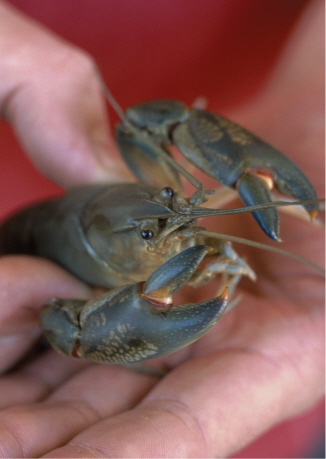
Husband and wife team Cocky and Judy Roberts have been farming yabbies for fifteen years. They were among the original suppliers of Mulataga yabbies and have a depot on their property, collecting and purging yabbies from surrounding local yabby farms.
The yabby season runs year-round. Traps are set using a piece of oily fish (often a sardine or mackerel) as bait, and the yabbies fall into a rectangular trap. To maximise numbers, the traps usually sit for at least 24 hours before they are pulled in by a length of string and the yabbies collected.
A rather crude device acts as a grading system. A shallow plastic box with slats as a base is filled with the yabbies collected in the traps. Those that fall through the spaces between the slats are returned to the dam; those that remain are deemed large enough for harvest. The company has devised cooling and transportation systems to keep the crustacea as calm as possible during transport.

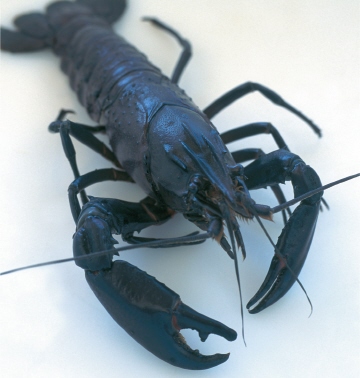
KING MARRON
(Cherax tenuimanus)
Reaching a maximum body length of around 18 centimetres (closer to 40 centimetres when including the claws), marron thrive on the sandy bottom of deep rivers. Although native to Western Australia, there are species found in New South Wales and South Australia. When cooked, the flesh is moist and firm.
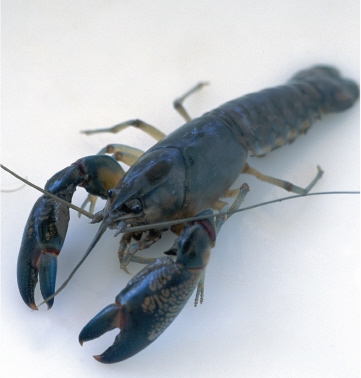
YABBY
(Cherax albidus)
Yabbies are resilient creatures that can survive out of water for days. Yabbies are smaller than marron and the flesh is sweet and held in high regard by chefs. In its natural environment, the yabby is found in slow-flowing water to a depth of five metres. More are farmed in Western Australia than in any other Australian state or territory.
GOLDEN OR CRYSTAL CRAB
(Chaceon bicolor )
Also known as the ‘golden lucky crab’ and the ‘Australian deep-sea crystal crab’, the golden crab is found in deep oceans (up to 1000 metres in depth) and is abundant just off the continental shelf of Western Australia. This crab can vary from a weight of about 600 grams to three kilograms, and is popular for its sweet flavour. The shell is thin, making it easy to prepare, and it has a high meat yield of about 36 per cent.
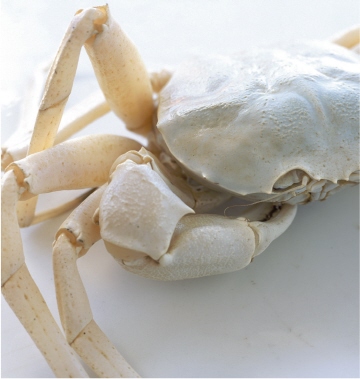
GIANT ‘KING’ CRAB
(Pseudocarcinus gigas)
A deepwater species, the giant crab (known as the ‘giant Tasmanian crab’ or ‘giant deepwater crab’) is prized for its delicate, sweet flavour and tender texture. This species is the largest found in Australian waters and is the world’s heaviest. It can reach 45 centimetres across its carapace (body diameter minus the claws) and a weight of more than 17 kilograms. It is slow growing and long-living, and numbers have dwindled as a result of waters being overfished.
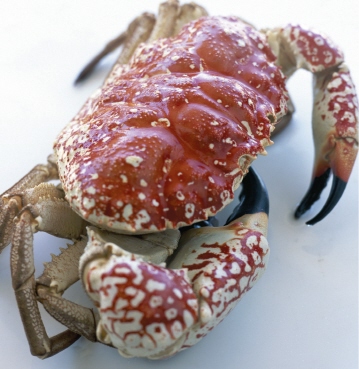

CHAMPAGNE CRAB
(Hypothalassia armata)
This species is found all around the eastern and southern coastlines of Australia: spanning southward from Mackay in Queensland and up to Port Hedland in Western Australia, in waters 30 to 540 metres in depth. At 15 centimetres across the carapace, the champagne crab is not big, but is in constant demand for its delicate flavour.
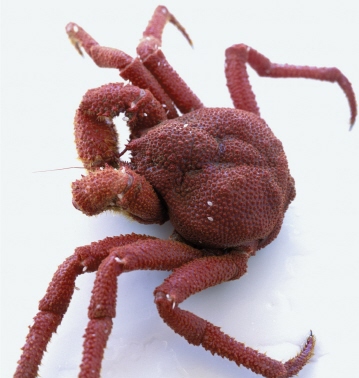
RED PEARL CRAB
(Maia squinado)
Commonly known as the ‘spider crab’, the red pearl crab is easily identifiable by the brilliant-red textured bubbles on its carapace and legs. The spider crab family have eight legs on their body, in addition to the pincers. The sweet, smoothly textured meat makes this a favourite.